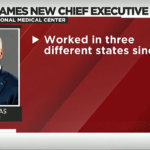MOSCOW — New U.S. sanctions against Russia have forced an immediate suspension of trading in dollars and euros on its leading financial marketplace, the Moscow Exchange.
The exchange and the central bank rushed out statements on Wednesday — a public holiday in Russia — within an hour of Washington announcing a new round of sanctions aimed at cutting the flow of money and goods to sustain Russia’s war in Ukraine.
“Due to the introduction of restrictive measures by the United States against the Moscow Exchange Group, exchange trading and settlements of deliverable instruments in U.S. dollars and euros are suspended,” the central bank said.
The move means banks, companies and investors will no longer be able to trade either currency via a central exchange, which offers advantages in terms of liquidity, clearing and oversight.
Instead, they will have to trade over-the-counter (OTC), where deals are conducted directly between two parties. The central bank said it would use OTC data to set official exchange rates.
Many Russians hold part of their savings in dollars or euros, mindful of periodic crises in recent decades when the rouble has crashed in value. The central bank reassured people that these deposits were secure.
“Companies and individuals can continue to buy and sell U.S. dollars and euros through Russian banks. All funds in U.S. dollars and euros in the accounts and deposits of citizens and companies remain safe,” it said.
One person at a large, non-sanctioned Russian commodities exporter told Reuters: “We don’t care, we have yuan. Getting dollars and euros in Russia is practically impossible.”
With Moscow pursuing closer trade and political ties with Beijing, China’s yuan has ousted the dollar to become MOEX’s most traded currency, accounting for 53.6% of all foreign currency traded in May.
Dollar-ruble trading volume on MOEX tends to be around 1 billion rubles ($11 million) a day, according to LSEG data, while euro-ruble trading hovers at around 300 million rubles daily. For yuan-ruble trading, daily volumes now regularly top 8 billion rubles.
WIDE SPREADS
On the eve of the national holiday, the rouble closed at 89.10 to the dollar and at 95.62 against the euro .
But following the sanctions news, some banks immediately jacked up their dollar rates.
Norvik Bank said it was offering to buy dollars for just 50 roubles but sell for 200 roubles, though it later adjusted the rates to 88.20/97.80. Tsifra Bank was buying dollars at 89 roubles and selling at 120.
Other major banks were quoting narrower spreads of 6-7 roubles between their buy and sell rates.
The U.S. Treasury said it was “targeting the architecture of Russia’s financial system, which has been reoriented to facilitate investment into its defence industry and acquisition of goods needed to further its aggression against Ukraine.”
Russia’s central bank has been bracing for such sanctions for around two years. In July 2022, the bank said it was modelling various sanctions scenarios with forex market participants and infrastructure organisations.
“This is bad, but expected news,” Russian broker T-Investments said on Telegram.
Forbes Russia had reported in 2022 that the central bank was discussing a mechanism for managing the rouble-dollar exchange rate should exchange trading be halted in the event of sanctions against MOEX and its National Clearing Centre, which was also hit by the new sanctions.
NERVY TRADING AHEAD
MOEX said share trading and money market trades settled in dollars and euros would also cease.
The sanctions will hit the exchange’s profits by slashing trading volumes. In May, total volume on MOEX was 126.7 trillion rubles ($1.43 trillion), up more than a third on the same month of the previous year.
In 2023, MOEX recorded net profit of 60.8 billion roubles, a year-on-year increase of 67.5%.
Yevegeny Kogan, an investment banker and professor at Russia’s Higher School of Economics, urged people against panicking.
“You know, it’s genetic for us – if we’re scared, we run to buy currency. And it doesn’t matter whether it’s 100, 120 or 150. You mustn’t rush,” he warned people on Telegram, saying things could get very serious if people ignored that advice.
“Friends, it looks like tomorrow will be a very nervy day.”
($1 = 88.9955 rubles)
Reporting by Alexander Marrow; Writing by Mark Trevelyan Editing by Tomasz Janowski and Mark Potter
Our Standards: The Thomson Reuters Trust Principles



